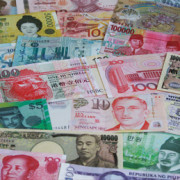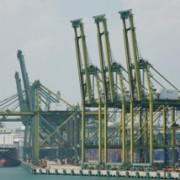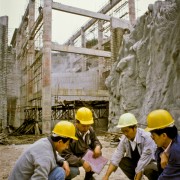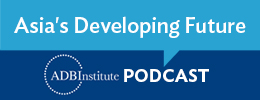Social development and protection
 Finance sector development
Finance sector development
 Industry and trade
Industry and trade
 Finance sector development
Finance sector development
 Industry and trade
Industry and trade
 Social development and protection
Social development and protection
 Governance and public sector management
Governance and public sector management
 Industry and trade
Industry and trade
 Finance sector development
Regional cooperation and integration
Finance sector development
Regional cooperation and integration
Social enterprises can add a new twist to capitalism

The time has come to look at “social enterprises”—a form of capitalism that includes social and environmental objectives in addition to the profit motive. More than a century ago, Henry Ford asserted that “a business that makes nothing but money is a poor business.” The world is now overrun by such “poor businesses.” The heedless pursuit of financial gains may produce happy management teams and shareholders, but it also results in an unhappy planet for businesses to operate in. The solution is not for these businesses to give some money to charity, or to get employees to play “builder” or “teacher” for a day as part of so-called “corporate social responsibility” initiatives.
Fostering exchange rate coordination: the role of an Asian Currency Unit

Over the past few decades East Asia has become increasingly intertwined economically as the share of interregional trade in total trade has increased sharply across most economies, driven by regional supply chains and production networks. These production networks have also fostered greater investment links, with the production process being broken down into subprocesses within a particular industry. The high degree of economic integration indicates that there may be a case for exchange rate coordination, as exchange rate misalignments may result in loss of competitiveness for a country, possibly leading to an increase in protectionism, which in turn could promote a round of beggar-thy-neighbor devaluations. Large swings in bilateral exchange rates could influence decisions about the location of new and existing investments. In contrast, greater stability in exchange rates would support investment by increasing price transparency and reducing currency-related hedging costs for companies. Finally, sharp exchange rate movements in one currency could affect another country’s ability to maintain a particular exchange rate regime.
End of export-led growth would not be good for post-crisis Asia

The decades leading to the current global economic turmoil saw many developing countries attempt to pursue the East Asian development model, which is widely perceived to have been export-led. Is such growth possible in the post-crisis world with shrinking global imbalances? Historical data may provide useful clues. Our paper, titled "Can Asia Sustain an Export-Led Growth Strategy in the Aftermath of the Global Crisis? An Empirical Exploration", finds that Asian growth in the pre-crisis period was significantly correlated with the proportion of their manufactured exports that were sold in industrialized country markets. Given this evidence, Asian exports to other developing countries may not be good substitutes for their exports to developed countries. The policy implication is clear: a deceleration of exports to industrialized countries may limit prospects for post-crisis growth even if exports to other developing countries pick up the slack. Asian policy makers should, therefore, be more willing than ever to experiment with new paths to technological catch up.
What makes an effective international financial safety net?

The global financial crisis showed the need for a large-scale and effective international financial safety net (IFSN). Although East Asia has had a regional financial arrangement (RFA) since 2000 (the Chiang Mai Initiative1), it was not tapped during the global financial crisis for a variety of reasons. Our recent study examines the requirements for an effective IFSN. It should have adequate resources to deal with multiple crises, be capable of making a rapid and flexible response, and not be encumbered by historical impediments such as the IMF stigma that would limit its acceptance by recipient countries. Oversight of the IFSN needs to be based on cooperation between global and regional forums, for example, in the case of Asia, the G20 and ASEAN+3.
Dealing with the “noodle bowl” of Asia’s free trade agreements

East Asia’s attitude toward free trade agreements (FTAs) has changed. Slow progress in global trade talks has led to a surge in FTAs across Asia. With the World Trade Organization (WTO) Doha Round trade talks stalled, Asian countries see FTAs as a way of liberalizing trade and investment and sustaining economic recovery. The number of signed and implemented FTAs in the region has increased from three in 2000 to more than 60 in 2012, sparking concerns about an Asian “noodle bowl” of agreements. Critics worry about overlapping rules of origin (ROOs) requirements, which may be costly to business, especially small and medium-sized enterprises (SMEs), and argue that this wave of agreements will undermine the multilateral liberalisation process. A search for pragmatic and innovative ways to untangle the noodle bowl of Asia’s free trade agreements is needed.
Is Japanese aid ineffective?

Since 2003, the Center for Global Development (CGD), a Washington-based think tank, has been ranking the aid programs of the world’s richest countries using its commitment to development index (CDI). The CGD produces an index of donor performance, which measures “aid quantity and quality”. This index tracks net aid transfer as a share of gross domestic product (GDP), while penalizing tied aid and project “proliferation” and rewarding aid to poor but non-corrupt recipients (this is referred to as aid “selectivity”).
Asia in the 21st century: the challenge of good governance

The concept of good governance has many aspects. I will focus on two here: corruption and the rule of law. All Asians aspire to live in a society in which they do not have to offer a bribe to anyone in order to obtain what they are entitled to under the law. They want to live in a society in which the policeman, prosecutor and judge are not corrupt. They want to live in a society in which licences and contracts are granted and policies are made in a transparent manner and based on merit and nothing else. Corruption is a cancer eating at the heart of Asia. It is one of the most shameful of Asia’s failings.
Moving the Trans-Pacific Partnership forward: what will it take?

The formation of a Free Trade Area of the Asia–Pacific (FTAAP) has been intensively discussed in recent years. However, it is anticipated that such an Asia-Pacific Economic Cooperation (APEC)-wide FTA would take many years to negotiate and involve numerous studies among all the APEC members, currently 21 in number. The Trans-Pacific Partnership (TPP) could be a viable alternative. It is intended to be a “high-quality, comprehensive 21st century FTA” that will promote economic integration in the Asia-Pacific region. In addition to deep commitments to tariff reductions, it aims to cover services trade, investment, intellectual property, government procurement, competition policy, labor, the environment, and many other issues affecting trade and investment.
East Asia can learn from Europe’s mistakes
The current European crisis has highlighted the policy mistakes that were made in the process of European financial and monetary integration. It has exposed major deficits in the eurozone’s institutional framework, including insufficient macroeconomic policy coordination and the lack of a crisis response mechanism (which then had to be negotiated in the midst of crisis). One of the major failures that led to the current European predicament was that national and European policymakers allowed the build-up of huge macroeconomic imbalances within the eurozone. Wages and prices in southern “periphery” countries (with Ireland being an honorary member of the south) rose much more quickly than in the northern “core” countries such as Germany. The resulting loss of economic competitiveness of the periphery countries has led to a growth crisis that fed into a sovereign debt crisis after government finances were severely strained during the global financial crisis.
Does the Eurasian Union have a future?
On 3 October 2011, Russian Prime Minister Vladimir Putin proposed the establishment of a Eurasian Union in an article published in the Russian broadsheet Izvestia. The article was entitled “New integration project for Eurasia – making the future today.”


Search
Subscribe / Connect to Asia Pathways
Subjects
- Accelerating Progress in Gender Equality
- Addressing Remaining Poverty and Reducing Inequality
- Agriculture and natural resources
- Capacity development
- Climate change
- Economics
- Education
- Energy
- Environment
- Finance and Innovation
- Finance sector development
- Gender
- Globalization and Economic Stability
- Globalization, Environment, and Climate Change
- Governance and public sector management
- Health
- Human Capital Development for Inclusive Growth and Shared Prosperity
- Industry and trade
- Information and Communications Technology
- Infrastructure
- Making Cities More Livable
- Miscellaneous
- Population
- Poverty
- Private sector development
- Promoting Rural Development and Food Security
- Regional cooperation and integration
- Sanitation
- Social development and protection
- Strengthening Governance and Institutional Capacity
- Subjects
- Tackling Climate Change, Building Climate and Disaster Resilience, and Enhancing Environmental Sustainability
- Transport
- Uncategorized
- Urban development
- Video Blog
- Water
Recent Posts
- Facing the Heat: Addressing the Health Impacts of Extreme Temperatures
- Harnessing Energy Transition to Power Rural Development and Female Empowerment
- The Promise and Perils of Mother Tongue-Based Education
- From Crisis to Resilience: The Evolution of the Banking Sector in Asia and the Pacific
- Tariffs on the Table: What Could Be Asia’s Next Move?




Recent Comments